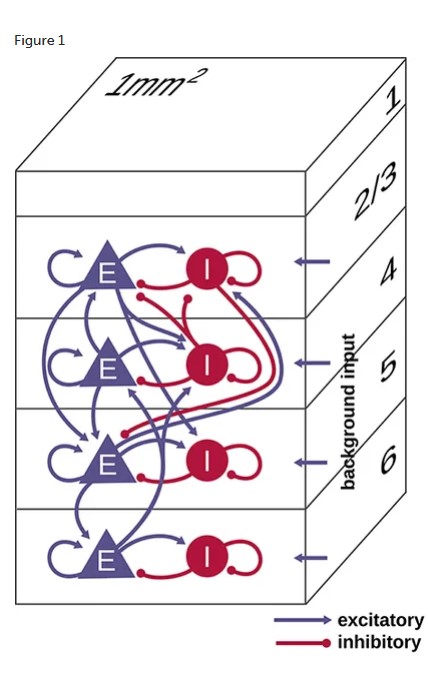HANS EKKEHARD PLESSER
On the tenth anniversary of the publication of a model of a cortical microcircuit by Potjans and Diesmann (2014), 14 experts in computational neuroscience and neuromorphic computing will meet at the KHK c:o/re, at RWTH Aachen, to discuss their experiences in working with this model.
This event is a unique opportunity to gain insights on the effect that the Potjans-Diesmann model is having on computational neuroscience as a discipline. In light of the success of the model, the participants will reflect on why active model sharing and re-use is still not common practice in computational neuroscience.

Hans Ekkehard Plesser
Hans Ekkehard Plesser is an Associate Professor at the Norwegian University of Life Sciences.
His work focuses on simulation technology for large-scale neuronal network simulations and reproducibility of research in computational neuroscience.
Computational neuroscience, the field dedicated to understanding brain function through modelling, is dominated by small models of parts of the brain designed to explain the results of a small set of experiments, for example animal behavior in a particular task. Such ad hoc models often set aside much knowledge about details of connection structures in brain circuits. This limits the explanatory power of these models. Furthermore, these models are often implemented in low-level programming languages such as C++, Matlab, or Python and are shared as collections of source code files. This makes it difficult for other scientists to re-use these models, because they will need to inspect low-level code to verify what the code actually does. One might thus say that these models are formally, but not practically FAIR (findable, accessible, interoperable, reusable).
The model of the cortical microcircuit published by Potjans and Diesmann (2014) pioneered a new approach, quite different to previous practice. For good reasons, this new approach made the model remarkably popular in computational neuroscience. Based on a well-documented analysis of existing anatomical and physiological data, Potjans and Diesmann provided a bottom-up crafted model of the neuronal network found under one square millimeter of cortical surface. Their paper describes the literature, data analysis and data modeling on which the model is based, and provides a precise definition of the model.

In addition to their theoretical definition of the model, they created an implementation which is executable on the domain-specific high-level simulation tool NEST. They complemented this implementation with thorough documentation on how to work with the model. They even created an additional implementation of the model in the PyNN language, so that the model can be executed automatically on a wide range of neuronal simulation tools, including on neuromorphic hardware systems.
These efforts have led to a wide uptake of the model in the scientific community. Hundreds of scientific publications have cited the Potjans-Diesmann model. Several groups in computational neuroscience have integrated it in their own modelling efforts. The model has also had a key role in driving innovation in neuromorphic and GPU-based simulators by providing a scientifically relevant standard benchmark for correctness and performance of simulators.
References
Potjans, T. C., Diesmann, M. 2014. The cell-type specific cortical microcircuit: Relating structure and activity in a full-scale spiking network model. Cerebral Cortex 24(3): 785-806.
van Albada S. J., Rowley A. G., Senk, J., Hopkins, M., Schmidt, M., Stokes, A.B., Lester, D.R., Diesmann, M., and Furber S.B. 2018. Performance Comparison of the Digital Neuromorphic Hardware SpiNNaker and the Neural Network Simulation Software NEST for a Full-Scale Cortical Microcircuit Model. Frontiers in Neuroscience. 12:291.



